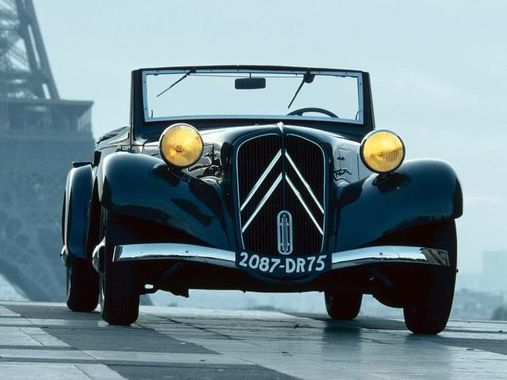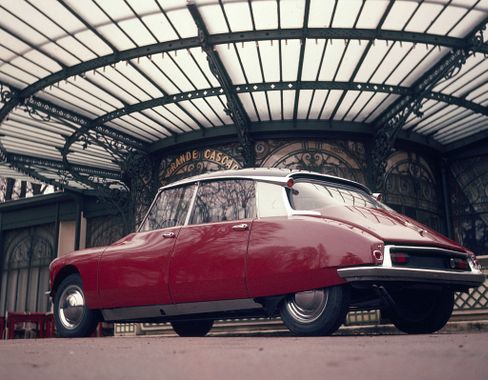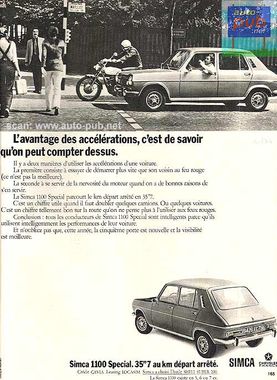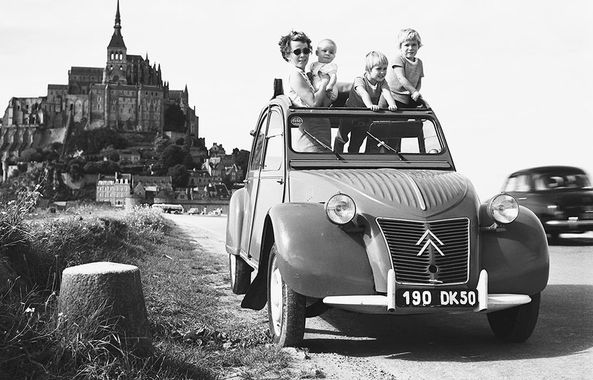Alright, France… Which one do I start with?
Citroën Traction Avant

The one that shown what a modern car will technicaly be.

Front drive, independent suspension all around, monocoque body, 2 liter 4cyl engine.
Not the first to do that but the one that had it all!
Citroën DS 1955/1976

What do I start with?
First, this car was ferouciously spied by the Auto-Journal magazine and its secrets were drop-fed and Citroën did legal actions to fight the publication and to find who leaked in the company.
Link to this story : ENGLISH – Citroën DS Archives: the text of the 1955 Auto-Journal scoop – Design – actualité – archives
In 1955 this situation was unheard of, car journalism was rather courtesan back then
The styling was on a another planet compared the Ponton looking Peugeots and Mercedeses.

And see the equipment: Automated manual transmission, Active suspension, Power discs brakes, Power steering, Crumple zone,The motor goes under the car if crashing and Plastic windows!

Even the car, being a machine, was human! It raised, lowered, ticked and hissed! It was alive!! So alive that an old woman called the preist because she thought the car was possessed by the devil!!
When it was working it was alive, when it broke down ( which it did quite a lot at the beginning) it still was sort of human because of cost cutting measures! Citroën got rid of the O-ring on the fittings of the hydraulic system and on top of that you add the corrossiveness of the synthetic liquid (LHS) used at first.
So, walking to your car for your morning commute, you find your car has sliced its veins, a blood pool under the car has formed. No more hydraulics,suspension, brakes, gearbox… No more life…
It came in an era when France was skyrocketing, unstopable! Nuclear power, France boat, Concorde (did with UK). So everything was possible! It was the 30 glorious afterall
We’ll pass all that’s been added before and after the facelift (engine and equipment)
Renault 16

This is the car defined what the european car would be forever!

It got rid of the gutters on its roof, it had a hatchback ( something new for such a “high end” car back then), it had modularity with foldable rear seats for example!

This car was everywhere and started the hatchback trend for all the non-premium brand, any brand that didn’t have a hatchback sedan would be out of fashion!
Simca 1100 Spécial

This is the first hotted-up compact car, before the term GTi was even created.

With 75hp ( yes 75!) it started the warmhatch war!
This is where it all started, all the other french manufacturers followed with R5 Alpine for example.
The hothatch started with that and it’s a trend we’re proud of even if french cars weren’t always the best it’s a “tradition” ( Megane, 306, Clio, 205 etc…) having an exciting FWD hatch in the range even if it’s not the fastest.
Citroën 2cv
Do I need to present it?

They built their design brief over a survey that defined a strong direction to follow!
All the R&D has been turned toward this car to make it as succesfull as possible which means durable, economical, light and cheap!

Everything has been tried, magnesium frame,aluminium body, acrylic windows, single light, fuel level stick and because they didn’t want to have an electric system they tried to use the back end of a firefly to make it as a light!

This car went on to become one of the most popular car of the country, starting with a 7 year waiting list!

It went through all the difficulties, all the trends all the cultural revolutions of the 20th century and kept its popularity until the end!

Renault 4

Dethroned by the 206 for most sold french car ever, the 4 has motorised the whole country from fireman, gendarmerie, farmers, wine makers… It was the workhorse!

Overloaded when it was new, undermaintained when it was 10 and now it is 30+, young people thrash it now in a Trophy Paris-dakar-esque! That’s quite a life!




















































